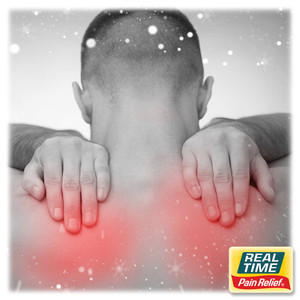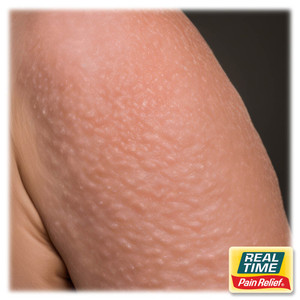3 Reasons to Use Menthol for Pain Relief
8th Dec 2021
Did you know that menthol can provide pain relief? Here are 3 reasons to use a menthol product the next time pain strikes!
Why Use Menthol for Topical Pain Relief?
Our skin is such an amazing organ that in addition to a multitude of tasks that hardly need mentioning—such as protecting our internal organs and responding to the sensation of touch—it can also absorb medicine. In fact, because the skin absorbs medicine so readily, topical remedies can be especially effective for providing immediate relief from pain. Menthol is one such tonic. Here are 3 reasons to consider using menthol next time pain strikes!
Menthol is often found in creams, gels, and salves because it is incredibly effective when applied topically—directly to the painful area. This ingredient is absorbed through the skin and will provide nearly immediate pain relief.
If you suffer from joint pain, sore muscles, back pain, arthritis, carpal tunnel, or a multitude of other aches and pains, you know how miserable it can be to feel incapacitated by pain. A little respite from your discomfort can work wonders—but it can be difficult to find antidotes that both work and don’t involve popping or injecting lots of chemicals or potentially harmful substances. Menthol is a compound derived from the mint plant and can seriously ease your pain and provide much-craved relief.
So What is Menthol? Where Does it Come From?
Menthol comes from Mint plants. Mints are awesome plants with a huge variety. You are probably familiar with Spearmint and Peppermint, but there are lots of other “minty” mints too, some with such alluring names as Chocolate Mint or Apple Mint, for example. There are also less “minty” mints, such as Catnip and Lemon Balm.
Mints have been used for centuries as an internal and external medicine for a range of ailments, including soothing digestive issues, fighting infections and mellowing pain. Menthol has more recently been extracted from the mint plants to be used in isolation.
Menthol is a monoterpene alcohol that is found in especially high concentrations in Peppermint (Mentha piperita) and Wild Mint (Mentha arvensis), also known as Corn Mint. It is extracted by first processing either Peppermint or Wild Mint to obtain the essential oil. The essential oil is then frozen. When frozen, menthol—which is the solid constituent of mint oil—separates from the oil as crystals and can then be filtered out.
These crystals are a potent medicine and can be used as a painkiller by dissolving it into oil, water or alcohol, depending on the medicine desired: creams, salves, lozenges, nasal sprays or throat sprays for example.
Menthol is widely used today thanks to the fact that it is effective—and FDA approved.
FDA Approved
Menthol works! And it’s safe! And, it’s naturally derived from plants too!
To become FDA approved, an ingredient must undergo rigorous testing to determine both efficacy and safety. In other words, Menthol is so effective and safe that even the FDA has acknowledged and approved of it as a topical pain relief agent.
However, the FDA does warn against products with more than 3% menthol, as it can actually burn the skin in excessive doses—as can most essential oils. Also, be sure to wash your hands after application as it can sting to touch your eyes or other sensitive areas.
Ok, But How Does Menthol Actually Work?
When menthol is applied to the skin, it interacts with the body to relieve pain in several ways. Here are the 3 primary ways in which Menthol works in topical applications:
1) Cooling Sensation:
Menthol interacts with the nerves in the skin, effectively “tricking” the body into thinking it’s cold (even though the temperature of the body technically remains the same).
Let’s break this down into more detail: You know you have nerves all over your body, and especially in your skin. These nerves carry messages to the brain. Messages such as temperature change. When the temperature drops, a receptor protein called TRPM8 changes shape to allow calcium ions to flow through to the nerve cell.
The calcium ions then set off a series of reactions culminating in the message, “It’s Cold!” being delivered to the brain. The brain will then respond to this information by making you go numb.
Incredibly, menthol also has the ability to bind to the TRPM8 receptor, thus triggering a message to the brain that it is cold. The brain then responds by numbing the area where the menthol has been applied, effectively numbing pain, even though your body temperature actually remains the same. Amazing!
2) Opioid Receptors:
Another way that menthol induces numbing sensations is through the Kappa Opioid receptors, which reside just below the surface of the skin. Menthol contains tiny molecules called ligands which activate the opioid receptors when absorbed by the skin. As the name Opioid may suggest to you, the resultant change in the receptors causes numbing, thus minimizing pain.
3) Vasodilation:
Vasodilation means that the veins expand, thus increasing blood flow. Menthol, when applied, inspires increased blood flow to the area of application. Increased blood flow can bring healing because the blood carries out toxic waste while at the same time bringing in fresh nutrients the body can use for cellular repair.
Conclusion
Menthol can be an invaluable aid for providing relief and comfort, whether you are suffering from a sprain or chronic back pain. It is safe and effective with fewer side effects than other pain relief products on the market. If you are dealing with pain, try rubbing in a menthol-containing lotion, and see if it brings you some comfort.
Pain Relief You Can Trust® Since 1998
For over 20 years, families across the U.S. have turned to Real Time’s lotions and creams for PAIN RELIEF YOU CAN TRUST®. From Lifestyle Essentials, through our Nujuvena line, to Pain Relief Formulas, Real Time has you covered. LEARN MORE





